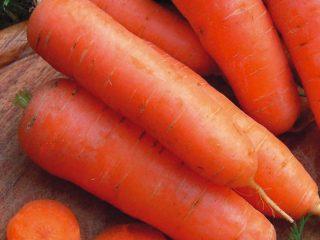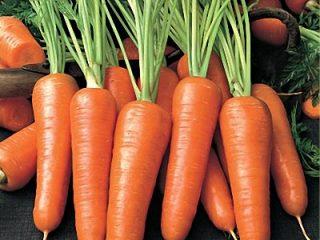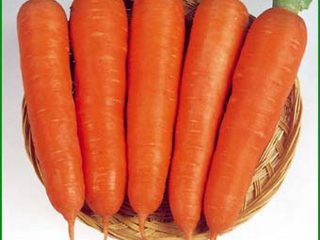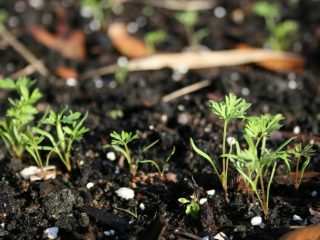Content
Carrot Sankina Lyubov F1 is a hybrid that gives a consistently good harvest in hard soil with a high clay content. Root vegetables are distinguished by their sweetness, rich in vitamins and carotene, and are perfectly stored until the next season.
History of selection
The Sankina Lyubov variety appeared as a result of the painstaking work of scientists at the Ural Summer Resident complex. The Moscow agricultural company has been engaged in breeding work for more than 80 years. She is working on the production of planting material for varietal and hybrid crops, which are characterized by increased frost resistance and hardiness and are intended for cultivation in the regions of Siberia and the Urals.
Description of the carrot variety Sankina Lyubov
The Sankina Love F1 variety is an unpretentious hybrid. The root crop has an elongated cone shape, the tip is slightly blunt.The average size of a vegetable is 20-25 cm, diameter is 2.5-3.5 cm, weight is 80-120 g.
This carrot variety is rich in carotene content. The color is rich, bright orange. The skin on the root crop is thin, the core is not pronounced. The taste is rated excellent, the flesh is sweet.
Characteristics of carrots Sanka's love
The hybrid is unpretentious to the soil and is characterized as super-yielding. Carrots of this variety produce a harvest even on heavy types of soil, where other representatives of this crop practically do not survive.
Maturation period
The variety is late ripening. The period from the appearance of the first shoots to the technological ripeness of root crops is 120-135 days.
Carrot yield Sanka's love
High-yielding hybrid. Subject to agrotechnical standards from 1 m2 You can collect up to 5 kg of fruit. The variety shows good performance on clay soils.
Resistance to diseases and pests
The Sankina Lyubov variety is susceptible to fungal diseases: black and dry rot, brown spot, black scab.
Illnesses can appear during the cultivation and storage of vegetables. Diseases occur when plantings are thickened and due to excessive irrigation.
Landing regions
Carrot Sankina love F1 is not included in the State Register of the Russian Federation, so it is not possible to find out the regions of cultural zoning. If we take into account the specialization of the manufacturer, it becomes obvious that the variety is intended for cultivation in the European part of Russia and the Far Eastern regions, where in the event of a strong drop in temperature, it is recommended to cover the beds with film.
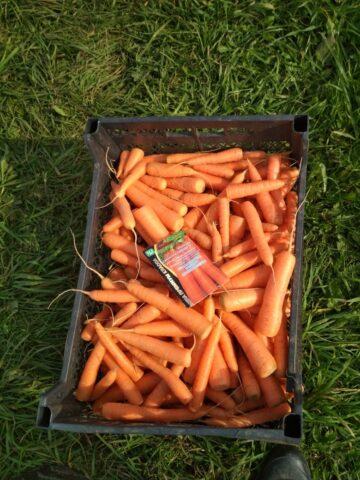
The hybrid variety Sankina Lyubov has taken root well in the gardens of neighboring countries - Moldova, Ukraine, the Republic of Belarus
Application area
Due to the high carotene content and excellent taste of root vegetables, carrots of this variety are recommended for use in making purees, juices, and casseroles. After heat treatment, the vegetable does not lose its taste. Fresh fruits are good.
Carrots can also be used to prepare dietary dishes.
Advantages and disadvantages
Most gardeners agree that the variety has virtually no drawbacks. Carrots are juicy, bright, suitable for both summer salads and winter preparations.
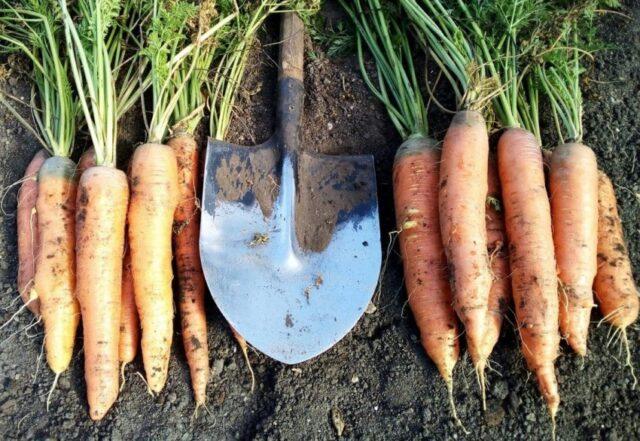
Hybrid Sankina love has increased productivity
Pros:
- long shelf life;
- pleasant taste;
- undemanding to soil quality;
- fruits of the same size, even shape;
- versatility of use, the ability to be used in children's diets;
- high content of carotene and sugar, rich chemical composition;
- the fruits do not crack, the vegetable is not prone to bolting;
- tolerates transportation well.
The disadvantages of the hybrid include susceptibility to pest invasions and fungal diseases.
Growing Tips
The Sankina Love variety can be planted in spring and autumn. Pre-winter sowing makes it possible to get an early harvest, but it is not used for long-term storage.

In order for the root crop to be stored throughout the winter, the crop must be planted in the spring.
The best predecessors for carrots are tomatoes, cucumbers, potatoes, corn, onions and cabbage. To avoid infection of root crops, it is not recommended to sow the crop after carrots, celery, zucchini, parsley and dill.
The optimal soil for growing is sandy loam or loam. Fresh organic fertilizers cannot be applied to sowing; this will lead to deformation of the root crops. It is better to choose a sunny area; it is advisable that garlic and onions grow nearby. They repel pests.
Preparing for landing
Hybrid seed material does not require pre-sowing measures. The seeds are immersed in the soil dry.
Rules, terms and planting scheme
Pre-winter sowing is carried out in late October. This process may continue until mid-November. In spring, carrots are planted from late April to mid-May. In the northern regions, the planting campaign is carried out two weeks later.
The grooves are made 1.5-2 cm deep. The recommended row spacing is 20-25 cm. The furrows are watered, seeds are sown, and covered with soil. To keep moisture in the ground longer, some gardeners cover carrot beds with film before germination.
Watering
The variety is moisture-loving. Watering is recommended every 2-3 days. The intensity of irrigation depends on the degree of growth of root crops. Mature fruits are poured so that the soil is wet by 15-20 cm.
To increase the shelf life and improve the taste, the beds stop watering 3-4 weeks before harvesting.
Weed control, thinning
Weeds take away nutrients from carrots. Measures to combat them are carried out as they appear.
To ensure large and even fruits, thinning is carried out 2-3 times during the growing season. When the tops reach a height of 4-6 cm, excess seedlings are removed, leaving a distance between the roots of 3-4 cm.
The thinning procedure is repeated a month later. This time the distance between the vegetables should be 5-8 cm.
Feeding
The hybrid does not require frequent fertilization. Four weeks after the first shoots appear, it is recommended to feed Sankina Lyubov carrots with inorganic compounds, which include phosphorus, potassium and nitrogen fertilizers.
After another 1.5 months, it is recommended to water the beds with a solution of wood ash.
Harvest and storage
It is advisable to harvest the Sankina Lyubov F1 carrots before mid-September, i.e. before the start of the rainy season. After the root crop has been removed from the ground with a shovel, it must be carefully cleaned of soil residues. The tops are cut at a height of 2 cm from the base.
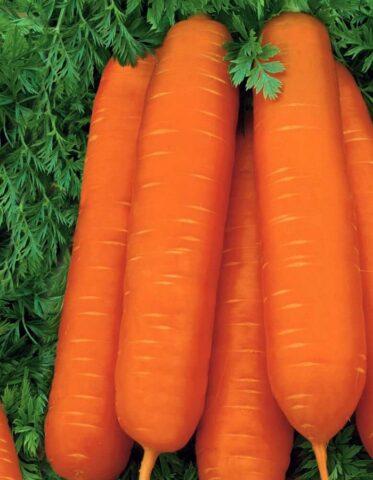
Whole root vegetables, without rot or mechanical damage, are dried in a dark place for 24 hours.
Carrots are placed in wooden boxes, sprinkled with sand. After this they are lowered into the basement. Recommended storage temperature: +2…+4 °C.
Pest and disease control
The best prevention of diseases and pest damage to crops is timely weeding and compliance with the irrigation regime. “Trichodermin”, “Phytodoctor”, “Fitosporin” help to cope with fungal diseases. If manifestations of a fungal disease were noticed too late, the affected root crops are removed from the beds, and the plantings are sprayed with Kuprosat.
The main pests are slugs, armyworms, aphids, mole crickets, wireworms and carrot flies.To combat them, insecticides “Aktara”, “Patrol”, “Provanto” are suitable.
Conclusion
Carrot Sankina Lyubov F1 is a variety that does not require much labor to cultivate. The most painstaking process is thinning the plantings. It is carried out when 3-4 full leaves appear. Timely implementation of preventive measures will help rid the beds of pests and diseases.
Reviews from gardeners about Sankina Lyubov carrots

